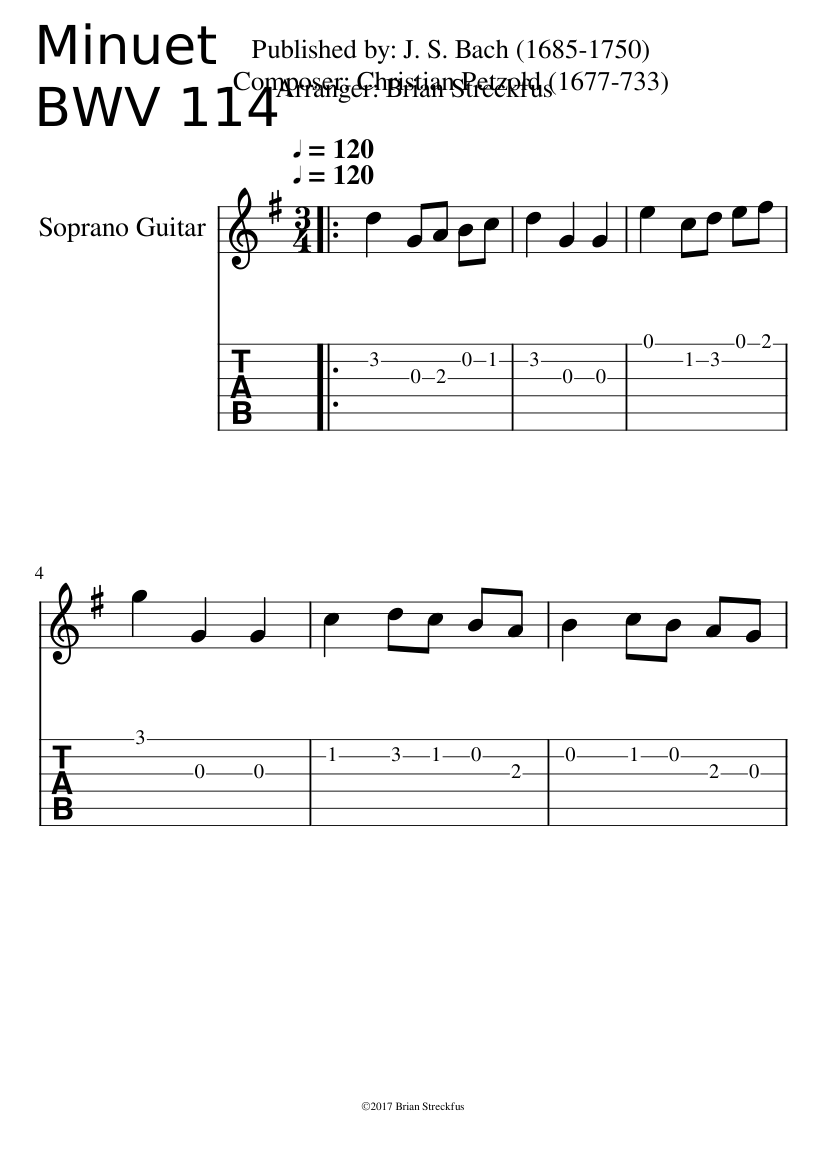
As would be expected for a minuet the piece is written in triple time. A speed of crotchet = 80 provides the piece with the momentum it requires. The copy I have suggests a tempo of crotchet = 76 – 88. The ABRSM notes state that the tempo of crotchet = 66 works well, however in my opinion this is a little slow. Tempo, time signature and rhythmic patterns – there seems to be varying ideas as to how fast this piece should be played. It is important for the player to consider the level of the dynamics from the end of one phrase to the next. These two phrases can be divided into two phrases each however the end of the first phrase of each flow into the following phrase. Phrasing – there are two long phrases in this piece, each 8 bars long. The dynamics will need to be increased in bar 15 followed by a gradual diminuendo to the conclusion of the piece. Main part of the music – this should occur on the second beat of bar 14 with a sudden reduction of the dynamics on the following beat. The piece moves to C minor in the third phrase before returning to G minor at the end of bar 13. The piece commences in the key of G minor with a modulation to Bflat major at the end of the first section. And lastly, thinking of the various parts in relation to instrumentation is helpful too as the LH requires a different sound quality between the upper and lower parts.įorm – as would be expected the form of this piece is binary with both sections to be repeated. There are times where the LH is gently supportive, other occasions where the LH becomes more active in the conversation and other times where the LH is contributing to the melodic line too. The words could reflect a concern or problem the person has, and they are looking for advice and sympathy from the person who represents the LH. Although it could be thought of in relation to the dance with the RH being the female dancer and the LH the male dancer, the player could also create some words that could accompany the RH’s melody. Bach Grade 3 ABRSM 2001 – 2002Ĭharacter/story of the piece – as the ABRSM notes state ‘this minuet is more an aria than a dance and has a very personal melancholic expressiveness’. Minuet in G minor BWV 842 from Little Clavier Book for W. Also the notes state ‘ the semiquavers should be unhurried and eloquent’. Similarly, a delicate decrescendo at the end of a phrase will anticipate a small breath and give the performance some space.’. » MIDI | Sinfonia in h minor, BWV 801 įree sheet music collection of the W.As I have stated below the ABRSM notes discuss phrasing of this pieces as follows - ‘it is the care given to the beginnings and ends of phrases which will give the melody a vocal line, accenting the first note of each will interrupt the musical flow, but a ‘tapered’ beginning will give musical direction. » MIDI | Sinfonia in B flat major, BWV 800 » MIDI | Sinfonia in E flat major, BWV 791

Classicalġ2 channels played live by © John Sankeyįree sheet music collection of the W. Live and sequenced (recorded on 1-2/VII/2002) by © Nausica Th. » MIDI | Invention in B flat major, BWV 785



» MIDI | Invention in E flat major, BWV 776 The Max Regers Transcriptions of the Bach's Inventions here. Sheet music (PDF) available for subscribers! Inventions and Sinfonias (from BWV 772 to BWV 801) Litte pieces (for Anna Magdalena or sons).Johann Sebastian Bach on Kunst der Fuge site: All MIDI's | Composers: A B C D E F G H I J K L M N O P Q R S T U V W X Y Z | MIDI/ZIP |


 0 kommentar(er)
0 kommentar(er)
